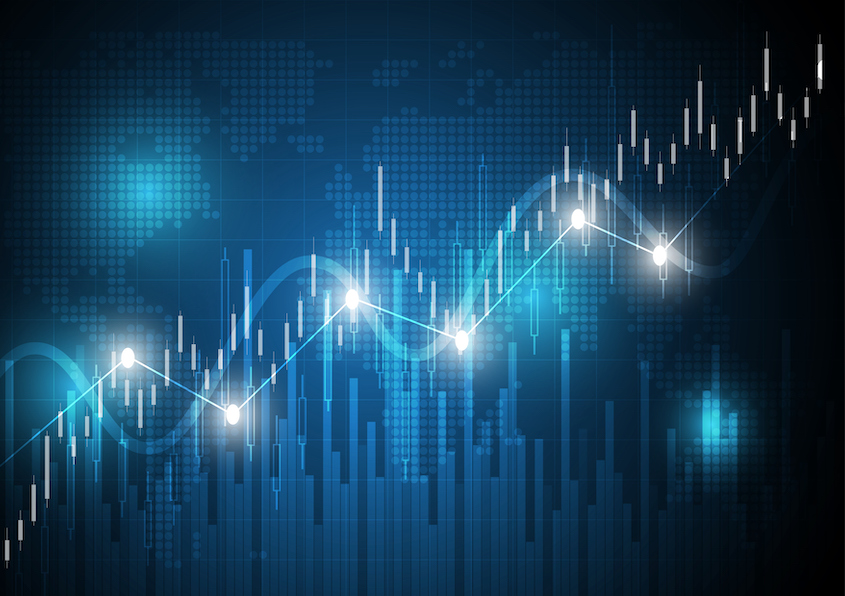

Inflation could be here for a while
T. Rowe Price Group’s Terry Moore offers his view on what to expect in the next six months, and where inflation, interest rates and corporate credit levels are headed
- Featuring: Terry Moore
- August 31, 2021 August 31, 2021
- 13:01
- From: T. Rowe Price

(Runtime: 5:00. Read the audio transcript.)
What market watchers are calling “transitory inflation” could stick around longer than expected, warns Terry Moore, vice-president with T. Rowe Price Group and a portfolio specialist in the company’s fixed income division.
Moore said there are elements to recent price rises — including unfettered government spending around the globe and a new attitude toward inflation by the U.S. Federal Reserve — that suggest higher prices could be a fixture in the economy for a while.
“Structural inflation would be [if] wages go up and they stay at higher levels,” he said. “That’s not what most economists are calling for. It’s not what we’re calling for. But inflation could definitely be a number that is greater than what we experienced over the last 10 years.”
He said the Fed’s new strategy, announced in August 2020, of targeting an average inflation rate of 2% rather than attempting to cap inflation at 2%, indicates that periods of higher inflation will be tolerated.
“What that means in the end is a steeper yield curve for investors than what we’ve had over the past decade or so,” he said.
He also said governments worldwide are in spending mode rather than austerity mode, as they were after the global financial crisis of the late 2000s.
“Some folks who are worried about inflation being a little more structural or durable, they point to that,” he said.
Nevertheless, he minimized concerns that inflation could become difficult to control.
“The economy is much different than the 1960s and 1970s, when we last saw runaway inflation,” he said. “And the ability for individuals to negotiate wages — that power is weaker today than it was in the 60s and 70s.”
Overall, he said, investors can expect steadily improving economic conditions as we head into year-end and into 2022, though he allowed that forecasting is a tricky endeavour because of the noise from Covid last year.
“As more people are vaccinated, and as children return to school and people return to work, we can expect the economy to continue to improve,” he said.
Strengthening conditions will inevitably lead to higher interest rates. In fact, he pointed out, they’ve already begun in places such as the Czech Republic, Hungary, Sweden, Russia, Mexico and Brazil.
“They’ve actually already hiked rates. And it comes from a number of reasons. It could be growth and inflation already returning, and their economies have reopened, so their central banks need to get hold of that inflation,” he said. “Certain central banks may want to protect their currency. Other central banks, like Russia, have done very well with oil prices going up so much, so they’ve seen the need to hike rates there.”
In any case, he said, those economies are the vanguard of coming hikes in Europe and North America, once we see an end to extraordinary bond purchase programs and quantitative easing programs.
“In order of the majors, we’ll likely see the Bank of England and the Bank of Canada hike a little before the U.S. does. The U.S. is probably not hiking until 2023. And then the [European Central Bank] will probably stay on hold the longest of all the banks, due to demographics and other structural issues in Europe.”
As for clues to pending rate hikes, he suggested keeping a close ear to central bank statements.
“The Powell Fed has placed a high premium on communication, as did [Janet] Yellen before him, and [Ben] Bernanke,” he said. “Sometimes you may see them floating trial balloons, to see how the market may react to a certain position. So, keeping a close eye on Fed communication, Bank of England, Bank of Canada communication will help investors have a little clue that a hike is coming.”
Another impact of a strengthening economy and the end of cheap money could be a trend in corporate deleveraging, he said. He thinks many corporations took advantage of low interest rates to borrow heavily in the face of the economic uncertainty brought on by the pandemic. But as the economy gains steam and the cost of money begins to rise, some firms may have a change of heart about carrying debt.
“If you look at leverage levels, and for some investment grade corporates, they’re going to have to start deleveraging at some point, whether it comes through greater sales as consumers and other business expenditures go up, or they might just have to actually reduce the debt levels on their balance sheet.”
He pointed out that the end of government supports means corporations will sink or swim during the economic recovery.
“Over the last year, central banks came to the rescue and provided a lot of accommodation, so the risk of defaults on the corporate side [was] very, very low.” he said. “But, as we go forward, I think we have to remember that the Fed, the Bank of Canada and other central banks around the world are going to start removing that accommodation.”
Risk needs to be priced properly going forward, he cautioned.
**
This article is part of the Soundbites program, sponsored by Canada Life. The article was written without sponsor input.
